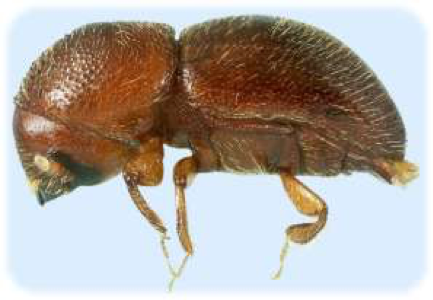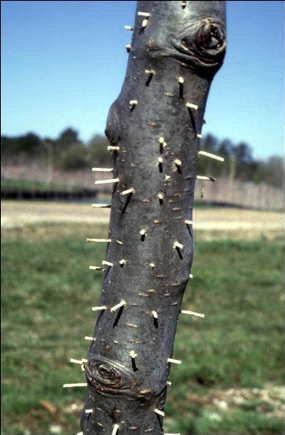Granulate Ambrosia Beetle Control
go.ncsu.edu/readext?593803
en Español / em Português
El inglés es el idioma de control de esta página. En la medida en que haya algún conflicto entre la traducción al inglés y la traducción, el inglés prevalece.
Al hacer clic en el enlace de traducción se activa un servicio de traducción gratuito para convertir la página al español. Al igual que con cualquier traducción por Internet, la conversión no es sensible al contexto y puede que no traduzca el texto en su significado original. NC State Extension no garantiza la exactitud del texto traducido. Por favor, tenga en cuenta que algunas aplicaciones y/o servicios pueden no funcionar como se espera cuando se traducen.
Português
Inglês é o idioma de controle desta página. Na medida que haja algum conflito entre o texto original em Inglês e a tradução, o Inglês prevalece.
Ao clicar no link de tradução, um serviço gratuito de tradução será ativado para converter a página para o Português. Como em qualquer tradução pela internet, a conversão não é sensivel ao contexto e pode não ocorrer a tradução para o significado orginal. O serviço de Extensão da Carolina do Norte (NC State Extension) não garante a exatidão do texto traduzido. Por favor, observe que algumas funções ou serviços podem não funcionar como esperado após a tradução.
English
English is the controlling language of this page. To the extent there is any conflict between the English text and the translation, English controls.
Clicking on the translation link activates a free translation service to convert the page to Spanish. As with any Internet translation, the conversion is not context-sensitive and may not translate the text to its original meaning. NC State Extension does not guarantee the accuracy of the translated text. Please note that some applications and/or services may not function as expected when translated.
Collapse ▲If you have woody ornamentals and trees in your landscape you may have noticed damage from the granulate ambrosia beetle. This pest was introduced from Asia in the early 1970s. It has since spread throughout the Southeast. An infestation can be identified by toothpick-like strands (or frass) protruding up to 1.5 inches from trunk of the host plant. These strands of boring dust are produced by the female beetle as she begins to excavate her gallery. The strands are fragile and are easily broken off by wind or rain leaving only pencil-lead sized holes. Individual plants may contain from one to hundreds of individual beetles. Ambrosia beetles become active around the first of March in the North Carolina Piedmont and usually peak by early April. Timing is dependent on local weather conditions and beetles can attack trees much earlier during warm spells. Ambrosia beetles remain active through the summer and into the fall. Trees located in nurseries are attacked primarily during the spring but trees within the landscape may be attacked all summer. Females bore into twigs, branches, or small trunks of susceptible hosts. They excavate tunnels in the wood, introduce ambrosia fungus, and lay eggs to produce a brood. It is the growing fungus on which the beetle grubs feed, not the wood.

Adult Granulate Ambrosia beetle

Ambrosia Beetle damage to cherry tree.
Homeowners have few products available that contain the active ingredients permethrin or bifenthrin that may be sprayed on the trunk. However, these only work as prevention and will not work once the beetle is inside the tree. Whenever you decide to use pesticides be sure to also follow the label and recommended dose. It is best to maintain healthy plants to reduce and outgrow any damage from Ambrosia beetles. For more information on insect pests and other topics please contact Colby Griffin, colby_griffin@ncsu.edu or 919-496-3344.




